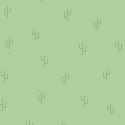Tag:natural=wood
| Description |
|---|
| Tree-covered area (a 'forest' or 'wood') |
| Rendering in OSM Carto |

|
| Group: natural |
| Used on these elements |
| Useful combination |
|
| See also |
| Status: de facto |
| Tools for this tag |
|
Tree-covered area (a 'forest' or 'wood'). Used by some mappers to tag only certain woodland areas with limited or no forestry management, but often used for any tree-covered area.
There are major differences in the way this tag and landuse=forest are used by some OpenStreetMap users. Some use this tag to show an area is covered in trees, others use it for woodland not impacted by human maintenance. This problem is explained in the page Forest.
See the page Forest to understand the usage of this tag and landuse=forest.
If your are mapping a forest, understood as a mainly (but not only) wooded area, which is considered in its whole as a single forest, the present tag is to be understood as modelling the physical forest (that is to say, the wooded cover of the area). For the forest in its whole (with its glades, stand variations…), use boundary=forest; for forest compartments, use boundary=forest_compartment.
How to map
Draw an area to match the shape of the woodland and tag it with natural=wood. If an exact match is infeasible then approximate shape is acceptable. As the last resort place a node instead of an area.
Additional tags
- name=* - name of the woodland
- leaf_type=broadleaved/needleleaved/mixed - describes the type of leaves / needles
- leaf_cycle=deciduous/evergreen/mixed - describes the phenology of leaves / needles
- managed=yes/no - proposed to specifically distinguish managed or unmanaged woodlands
- operator=* - for managed or protected woodlands (you should probably use boundary=forest+operator, which was designed for some such cases)
- species=* - for a list of all species (scientific name) in the area
- genus=* or taxon=* - probably more suitable for wooded surfaces (e.g a oak forest will have the tags genus=Quercus and genus:en=Oak)
- plant_community=*
Carto rendering of subtags
If leaf_type=* is also set, this can be indicated by appropriate symbols for conifers, deciduous trees and mixed forests.
| Tag | Rendering | Comment | Pictures |
|---|---|---|---|
| leaf_type=broadleaved | 
|
Broadleaved woodland (doesn't mean deciduous). |  
|
| leaf_type=needleleaved | 
|
Needleleaved woodland. |  
|
| leaf_type=mixed | 
|
Mixed woodland. |  
|
| leaf_type=leafless | 
|
Leafless vegetation. |  
|
See also
- Forest for relation to landuse=forest
- wetland=swamp
- natural=tree - for a single tree
- natural=scrub - scrubland, with bushes and shrubs
- Vegetation - summary of tags for various types of trees and plants
- boundary=forest and boundary=forest_compartment, which allow to map non-wooded areas as part of the surrounding forest if these non-wooded areas are considered so
Tagging mistakes
| ||||||||||||||||||||||||||||||||
